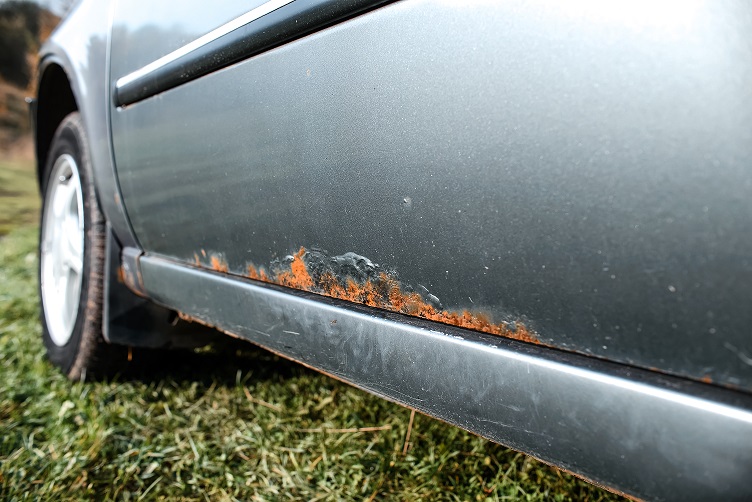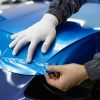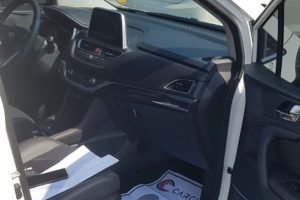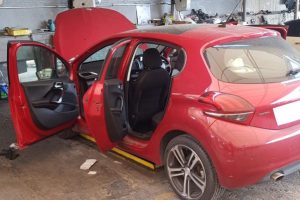How to Treat Rust that Affects your Car
On the fender is an ominous brown stain. A paint bubble around the bottom of a door. After stumbling into a puddle, the floors became soaked. Rust is a sign that the iron worm has been hard at work. Even in Dubai, no cars are free from rust. Every car driver suffers from it. Dread it. Run from it. But rust will arrive. If you own a car in Dubai and are not sure about the remedy for the rust attacking your car, we are here to help you.
Iron’s fragile chemical nature implies metal will always rust in a natural environment, despite the complex coatings and alloys made by chemists and engineers. In fact, given enough time, iron and most steel will totally decompose into iron oxide and other constituent components. This does not imply that you cannot drive your car anymore in Dubai! Understanding how cars rust, where the issue areas are on your car, and how to handle the brown, flaky problems mean your pride and pleasure can last as long as you do. If the situation worsens, take your car to a car service centre where they will ensure optimum repair of your vehicle.
How Does Your Car Rust?
Rust is formed when iron-based metals undergo electrochemical breakdown. The process of oxidation, in which iron surface molecules combine with oxygen in the atmosphere to generate a new molecule, Fe2O3, also known as iron oxide, causes this breakdown. Rust is made up of iron oxide.
Exposed steel rusts at varied rates depending on alloy components, thickness, the climate in which it lives, and the sort of heat treatment it receives. Then there’s the salt effect. Electrolytes are impurities such as road salts and other pollutants dissolved in water. When electrolytes are added to a chemical reaction, the interchange of molecular components is accelerated.
Alloying elements like nickel and chromium added to automobile steel can help prevent rust, but nothing is fool-proof—everything corrodes eventually. Modern sheet steel also has incredibly durable coatings when it comes off the roll. These are amplified at final assembly plants, where freshly built vehicle bodies are bathed in anti-corrosion chemical baths before painting.
Types of Rust
- Surface Rust
The majority of surface rust on your car occurs when the paint breaks down due to mechanical or UV damage, which is why it occurs even in hot, dry conditions. Surface rust is not a structural issue, and depending on the thickness of the metal and the alloy composition, a level of “passivation” can be achieved where the surface rust actually protects the metal from further oxidation.
- Scale Rust
You may notice bubbles forming in your car’s paint if you don’t address surface rust and allow the decomposition to progress deeper into the metal. This is due to the fact that iron oxide molecules are physically larger than iron or steel molecules. Scale is a rough, pitted sort of corrosion caused by rust penetrating into the surface in this way. Using a wire brush to remove rust, a grinding wheel to remove roughness, and sandpaper to smooth off the surface are all methods for removing scale.
- Penetrating Rust
Scale is a rough, pitted sort of corrosion caused by rust penetrating into the surface in this way. Using a wire brush to remove rust, a grinding wheel to remove roughness, and sandpaper to smooth off the surface are all methods for removing scale. Do not attempt to reassemble your car’s frame. A rusted-through frame indicates that the car’s structural integrity is in doubt, and it should be evaluated and repaired by one of the best car service centres in Dubai like Carcility.
How Can Rust be Stopped?
The best piece of advice is to wash your automobile on a regular basis to keep the body and underneath free of road filth, salts, and dirt, which cause corrosion. Many modern car washes may use water to blast the filth from the underneath of your vehicle. There are drain holes in the bottoms of doors and rocker panels, which allow rainwater to run out. Clear the holes with a pipe cleaner and keep the car’s nooks and crannies dry. WD-40 can also be effective in this situation. The small nozzle of this lubricant may be used to reach tight underbody places and blast away water or corrosive filth, and it protects parts from corrosion.
Sand off any rust that may be sticking through and rough up the area you wish to paint with sandpaper, then brush or spray on the new coating, as with other rust restorations. You should be able to get years of safe driving out of even the most damaged winter beater if you keep it properly sealed from the outdoors and clear of harmful salt and grime.







